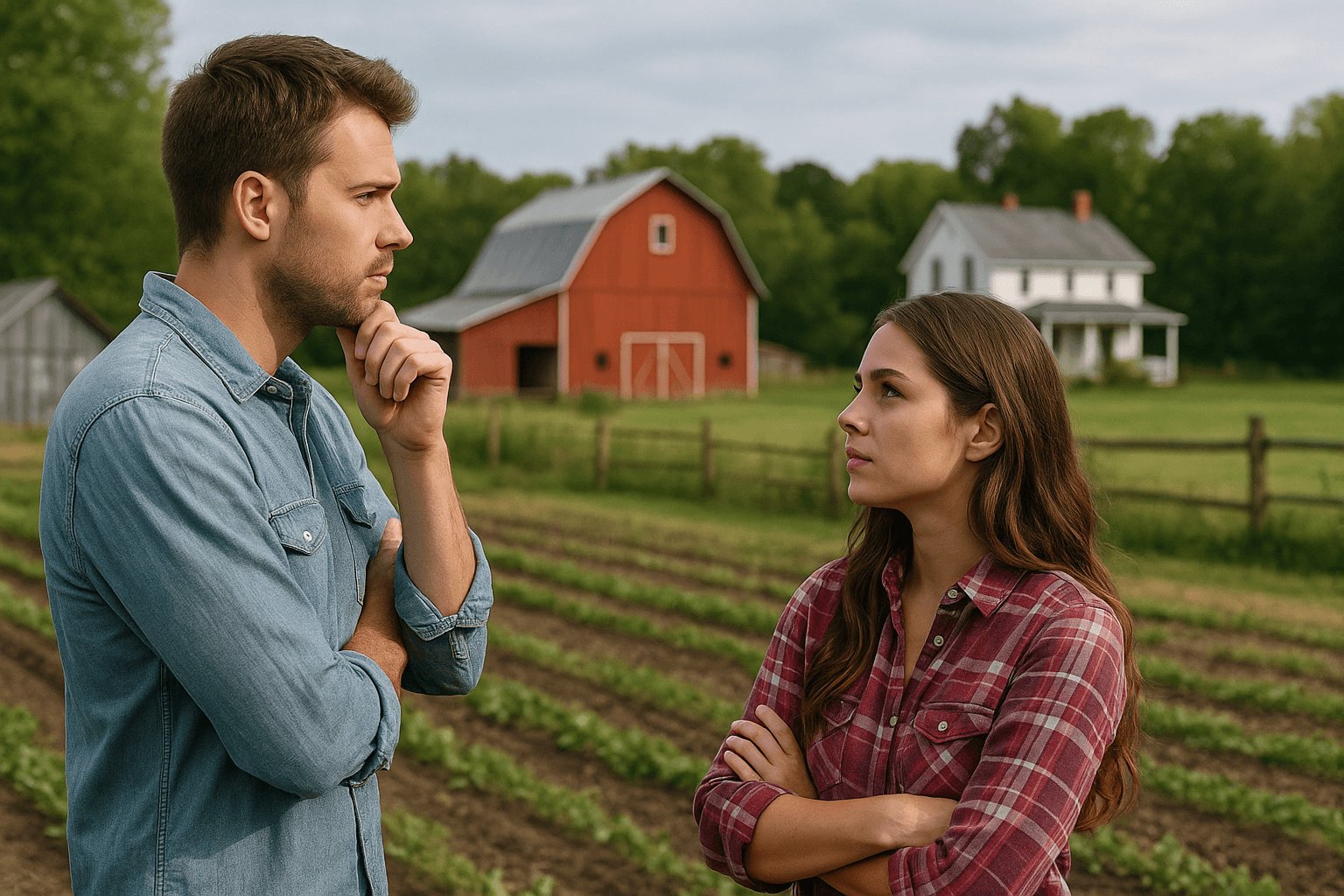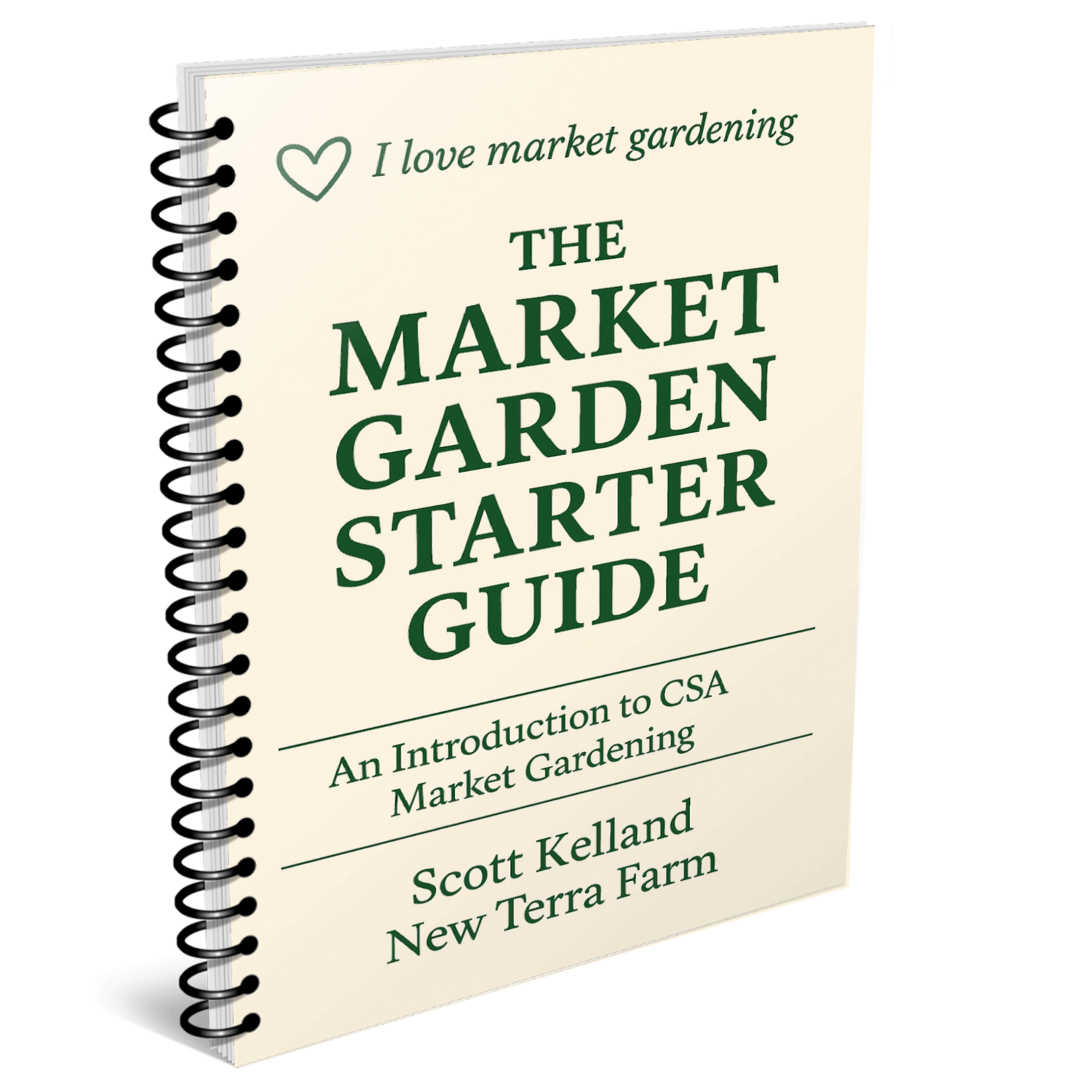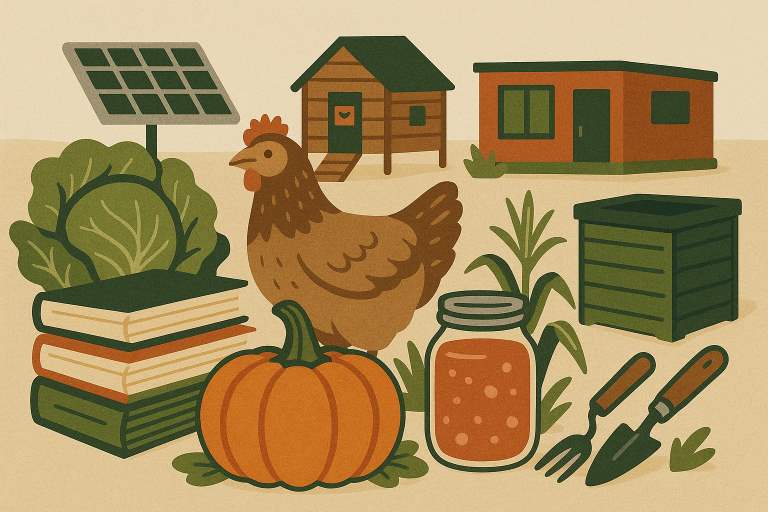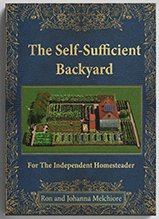How to Buy a Farm: A Practical Guide for First-Time Growers Contemplating how to buy a farm? Read this first. Contemplating how to buy a farm? Read this first.Almost every new farmer starts the same way; daydreaming about open fields, a tidy barn, and a freezer full of homegrown food. The dream feels good. The reality can be quite a bit different. This article will show you ow to buy a farm without going bust or busting your back trying to make a go of it. Buying a farm is one of the biggest financial and lifestyle decisions you’ll ever make. Get it right, and you’ll build a lifetime of freedom and satisfaction. Get it wrong, and you’ll spend years digging yourself out of a hole, sometimes literally. Let’s walk through what most people do (and why it backfires), then I’ll show you a way to buy your first property smart, lean, and ready to produce. What Buying a Farm Really Means (and Why It’s So Important to Understand This)Buying a farm isn’t just a real estate transaction. It’s a lifestyle redesign. You’re not just buying land; you’re buying work, responsibility, and opportunity. A farm can be:
But it can also become a financial anchor if you treat it like a romantic escape instead of a business decision. That’s why “how to buy a farm” isn’t only about money. It’s about fit. The right farm fits your goals, skills, budget, and season of life. What Many People Do (and Why It Doesn’t Work)When aspiring homesteaders or farmers start looking for property, they often fall into a few predictable traps. Trap 1: Buying Too Much Land Too Soon Trap 2: Falling in Love with the View Trap 3: Forgetting the Business Side Trap 4: Ignoring Infrastructure Costs The end result? A lot of folks end up land-rich and cash-poor, working full-time jobs to pay off a property they never fully use. A Better Approach: Buy with Purpose, Not EmotionHere’s the mindset shift that saves time, money, and stress: Every dollar you spend on acreage, buildings, or equipment should make it easier to grow food, earn income, or reduce living costs. A farm needs to pay its way, not just in dreams, but in dollars. Here’s how to do it. I teach this in my Bootstrap Boot Camp Success Plan Course. Carefully Curated Resources For The Homesteader and Prudent Property Owner The world seems to be a little unsettled these days. I'm always looking for ways to make New Terra Farm more self-sufficient and productive. Here's a few of the best ways I've found to make self-sufficiency happen. Useful Homesteader Resources How to Buy a Farm Step 1: Define Your Farming Vision and Income PlanBefore you even glance at listings, you need to know what you’ll use the farm for. Ask yourself:
Your answers shape the kind of land, buildings, and location that make sense. For example:
Define the business before you buy the dirt. Check out my Bootstrap Book series for some ideas. How to Buy a Farm Step 2: Set a Real Budget (Then Add 20%)Farming isn’t just the price of land; it’s the cost of making it work. You’ll need to budget for:
Always add 20% to your estimate. Surprises are part of farming, better to plan for them now. Treat your farm purchase like a small business investment, not a personal dream. If it can’t eventually pay its own bills, it’s not sustainable. How to Buy a Farm
Step 3: Evaluate the Land Like a Farmer, Not a Realtor
When you walk a property, ignore the listing photos. Focus on what matters long-term. Key factors to check:
If the soil and water are good, most other issues can be fixed over time. Fences are a bonus. That big beautiful pasture is a lot less useful if it isn't fenced. We spend the first two years at New Terra Farm putting posts in the ground and running page wire. How to Buy a Farm Step 4: Start Small and Start SmartIf this is your first property, consider starting with a small, affordable homestead, even a few acres. You can always move up later once your systems and skills are solid. Start where you can:
Here’s a real truth: you’ll learn more farming one productive acre than owning 20 idle ones. How to Buy a Farm Step 5: Think Location Like a Business OwnerCheap land far from town sounds great; until you spend 3 hours a week hauling supplies or delivering produce. Think in terms of proximity to opportunity:
Being close to your market is often worth paying a little more per acre. New Terra Farm is located 20 minutes away from three small towns full of hungry customers, and 7 minutes away from our local village. Makes the logistics a LOT easier. How to Buy a Farm Step 6: Run the Numbers Before You SignCreate a simple cash flow projection:
Your goal is positive cash flow within 2–3 years. If it doesn’t pencil out, wait or downsize. Remember, patience pays. It took us 2 years to find the right property, and we've never regretted it. How to Buy a Farm - Not!Mistake #1: Treating It Like a Hobby If you buy land without an income plan, it’ll stay a hobby that costs you money. Always tie the purchase to a production goal. Mistake #2: Ignoring Zoning or Regulations Don’t assume you can farm anywhere. Check local zoning, water rights, and business bylaws before you buy. Mistake #3: Underestimating Startup Costs Buying land is just the beginning. Wells, septic, fencing, and equipment add up fast. Price out every system you'll need to build before you commit. Mistake #4: Not Testing the Lifestyle First Try renting a rural property for a year before buying. You’ll quickly learn if you love the work or just the idea of it. Mistake #5: Not Building Cash Flow Early Start selling something - anything - as soon as you can. A few hundred dollars a month from eggs, veggies, or flowers builds confidence and keeps the momentum alive. We sold or bartered eggs and broiler chickens from Year One. Helped us hone our skills and build a network How to Buy a Farm - Your HomeworkHere's some practical steps you can start right now to plan for you farm purchase. Exercise 1: Vision Statement Exercise 2: Budget Reality Check Exercise 3: Skill Audit Exercise 4: Market Map Exercise 5: Field Day My Bootstrap Boot Camp Success Plan Course will walk you through all of this and more in detail. The TakeawayBuying a farm isn’t about acreage; it’s about alignment. When your goals, skills, and finances match your property, life flows. When they don’t, you’ll fight the land every season. So start small. Think like a business owner. Let profit guide your progress. The right farm won’t just grow food; it’ll grow freedom. It's been that way for us for more than 25 years. You Don't Need a Big Property To Be More Self-SufficientI didn't write this one, but it's an excellent resource for the homesteader or small property owner anyway! The Self-Sufficient Backyard has literally hundreds of plans and practical tools and techniques for the serious homesteader.Written by a couple who have actually done the work. From growing food, to medicinal herbs, solar electricity, root cellaring, growing small livestock, and selling select produce as a side hustle, plus many more money-saving and money-making ideas, this book is an encyclopedia of growing and building knowledge. A must-have in your homestead library. I only write about topics I have personal experience with. The authors of The Self-Sufficient Backyard have done the same. Highly recommended!  The consumer demand for fresh local organic food has never been higher. Bad news on the supply chain is good news for local growers. Get my free Organic Market Gardener Start-up Guide and see if this is the right time to launch your CSA market garden business.Enter your email to get instant access to this valuable free guide.
|
See Something You Like? Share!
Recent Articles
-
Farm grown reviews of products recommended by New Terra Farm
Dec 04, 25 06:26 AM
Find great farm and garden products in my farm grown reviews -
Best Chicken Coop and Accessories for Small Farms and Homesteads
Nov 30, 25 09:18 AM
Looking for the best chicken coop? Here are the top coops, accessories, nest boxes, and gear to build a safe, productive poultry setup. -
Community Supported Agriculture Marketing Ideas To Sell Out The Season
Nov 05, 25 05:18 AM
Authentic Community Supported Agriculture marketing ideas to grow loyalty, boost sign-ups, and sell out your CSA every year




